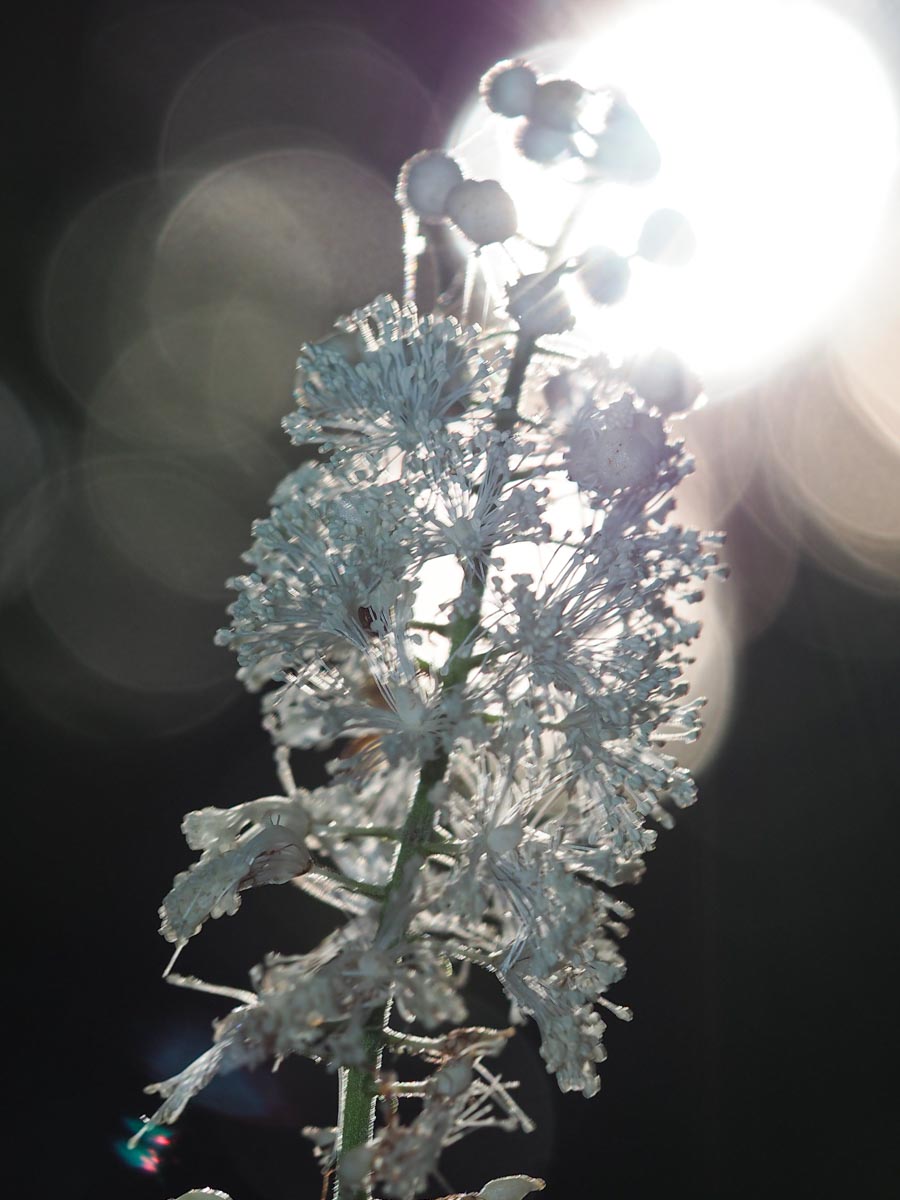Black cohosh is flowering now in my forest, apparently enjoying the string of 90-degree days and high humidity as summer approaches. It has an assortment of colorful names. My favorite is fairy candle, because when the last light hits them in the forest they seem lit up like fanciful candles.
My first memory of this genus is on summer hikes in the Adirondacks with my dad, when he pointed out Actaea pachypoda, commonly known as white doll’s eyes. He warned me they are very poisonous and not to eat them. Of course, like most kids this was almost a challenge. I had to restrain myself from trying one of the amazing berries. I also remember thinking it seemed a risky name, making it more likely they would be added to forest craft projects. This would increase the temptation to try just one.
Since I don’t want to disturb my plants thriving naturally, I am growing some from seed this year to spread into my garden. I’m fond of the genus Actaea, and actually have seeds of five different species from two different plant society seed exchanges, with some seedlings ready to plant out later this year. I want to do my part in helping out species that depend on them.
The Appalachian azure butterfly caterpillars only feed on black cohosh. For now, they are not endangered, but there is concern with plants collected as medicines this could lead to fewer plants available for the butterflies. Although the plants are toxic, a 2014 study found that around 60 million dollars was spent just in the U.S. on black cohosh herbal supplements.
I don’t eat them, but feel they have a healthful effect. I am mesmerized just enjoying their display of magical candles at day’s end, gently swaying in an evening breeze. As day turns to night, I can imagine their bright flowers guiding fireflies, and maybe even a few fairies, through the midnight woods.
